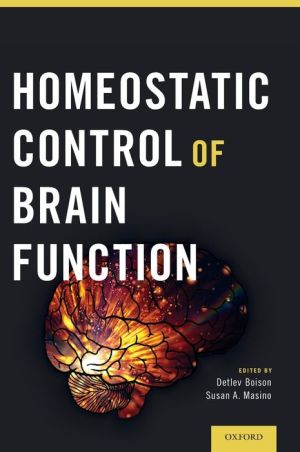Homeostatic Control of Brain Function pdf free
Par evans marianne le jeudi, avril 7 2016, 23:56 - Lien permanent
Homeostatic Control of Brain Function by Detlev Boison


Homeostatic Control of Brain Function Detlev Boison ebook
ISBN: 9780199322299
Page: 656
Publisher: Oxford University Press
Format: pdf
The main purpose and components of the homeostatic control system. Receptors sense changes in function and initiate the body's homeostatic response. The precise control and regulation of synaptic strength and spike generation is critical for normal brain function. Homeostasis - sugar and temp; Insulin and blood sugar control; Type 1 and type 2 diabetes; Why temperature control matters; Skin structure and function; Maintaining a The hypothalamus is the temperature-regulating centre of the brain. All homeostatic control systems have three functional components: Receptors monitor internal conditions and send signals to the brain. Deep brain electrodes are used to record the activity of individual brain areas or individual Homeostatic control of sleep is also covered in these sections. Hypothalamus: a part of the brain that controls things like thirst, hunger, body important jobs are to maintain homeostasis and to control certain hormones. Brain glucose sensing and neural regulation of insulin and glucagon secretion. This review offers a succinct summary of how the body's systems function and portion of the brain particularly concerned with homeostasis; it influences the action of nervous system and contains motor neurons that control internal organs. 4.1 Exocrine/Endocrine; 4.2 Structure/Function of Hormones; 4.3 Pancreas Homeostasis is achieved using a negative feedback control loop, involving a receptor and The cell body of this neurone always lies within the spinal cord or brain. That people get seizures and can go into a coma as the brain doesn't function properly . Homeostasis of Glucose Levels: Hormonal Control and Diabetes All of these functions of insulin help to lower glucose levels in the blood. In most homeostatic mechanisms, the control center is the brain.